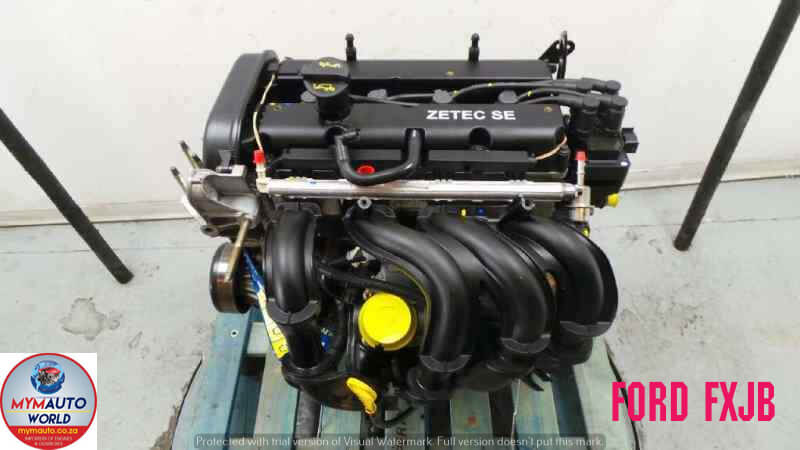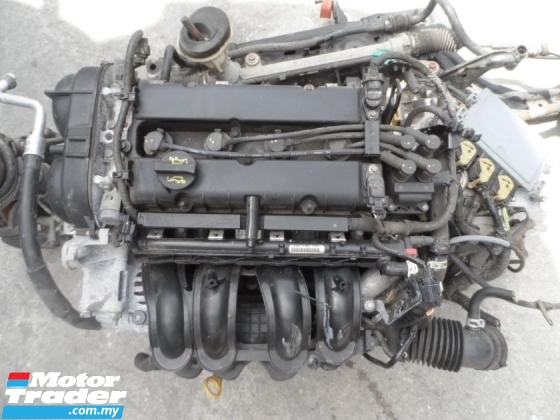The Future of Engines: Technologies Driving Sustainable Power Solutions
As the automobile sector navigates the necessary transition towards sustainability, the future of engines is progressively specified by groundbreaking technologies. Electric engine advancements, alongside encouraging developments in hydrogen gas cells and biofuels, are improving the landscape of power services.
Electric Engine Advancement
The advancement of electric engine advancements indicates a critical shift in the automobile and aerospace industries, driven by the urgent demand for sustainable alternatives to nonrenewable fuel sources. This shift is defined by considerable innovations in battery technology, power electronics, and electrical motor design, which jointly boost the performance and efficiency of electrical engines.
Current advancements have led to the creation of lighter, extra energy-dense batteries, such as lithium-silicon and solid-state batteries, which assure longer varieties and shorter charging times. In addition, enhancements in electric motor efficiency, such as the usage of long-term magnets and advanced cooling down systems, make it possible for electric engines to operate properly under differing conditions. These improvements not just improve lorry efficiency but also add to a reduction in total energy consumption.
In addition, the combination of sophisticated software program algorithms has enhanced energy management in electrical cars, permitting regenerative stopping and anticipating charging approaches. As producers increasingly welcome electric propulsion, the auto and aerospace sectors are observing a paradigm change towards greener modern technologies. This development not only satisfies regulatory needs but additionally lines up with customer preferences for eco-friendly transport services, strengthening electric engines as a keystone of future sustainable mobility.
Innovations in Biofuels
As the vehicle and aerospace sectors progressively focus on lasting energy sources, innovations in biofuels arise as a complementary remedy to electric engines. Biofuels, stemmed from natural products such as plants, waste, and algae, present an ingenious opportunity for lowering greenhouse gas emissions and dependence on fossil gas.
Current research has concentrated on boosting the performance and sustainability of biofuel production. Second-generation biofuels utilize non-food feedstocks, reducing competitors with food supply and lowering environmental impact. Additionally, advancements in synthetic biology have enabled the engineering of microorganisms to create biofuels a lot more properly, leading to higher yields and lower production costs.
Additionally, the advancement of drop-in biofuels enables smooth integration into existing facilities, making it possible for a smoother transition for industries generally depending on fossil fuels. ford fiesta engine. These gas can be used in current engines without modifications, facilitating their adoption throughout different markets
Investments in biofuel innovation, together with helpful policies, are important to drive technology and scalability. As the global neighborhood seeks to fight climate change, biofuels provide a practical, immediate solution that straightens with the overarching objective of sustainability in transport and aviation.
Hydrogen Fuel Cell Technology
A growing number of companies and researchers are discovering hydrogen gas cell technology as a viable option to traditional source of power in transportation and energy systems. This modern technology converts chemical power from hydrogen into electrical energy with an electrochemical reaction, with water as the only by-product, making it an environmentally pleasant choice.
The core of hydrogen fuel cells is the gas cell stack, where hydrogen particles are split right into electrons and protons. The flow of electrons produces electricity, while protons relocate through a membrane layer to integrate with oxygen from the air, creating water. This process leads to high effectiveness and reduced discharges, placing hydrogen fuel cells as a critical gamer in the transition to lasting energy.
Considerable advancements have actually been made in enhancing the durability and effectiveness of gas cells, alongside lowering expenses via innovative manufacturing methods. Moreover, the development of hydrogen production techniques, such as electrolysis powered by renewable resource sources, improves the sustainability of the total system. As facilities for hydrogen refueling expands and manufacturing methods end up being a lot more reliable, hydrogen fuel cell innovation holds fantastic guarantee for decarbonizing different fields, including sturdy transportation and fixed power generation.
Crossbreed Equipments and Their Influence
Hybrid systems stand for a significant advancement in sustainable engine technology, combining typical interior combustion engines with electric propulsion to maximize power performance and lower discharges (ford fiesta engine). This double method allows vehicles to make use of both power resources, allowing greater adaptability in power usage and minimizing dependence on More Info fossil fuels

Along with environmental advantages, hybrid systems provide consumers a sensible change towards fully electrical automobiles. They minimize range anxiousness by incorporating the benefit of gasoline with the benefits of electric propulsion, making them an attractive alternative for a larger audience. As makers buy hybrid technology, the advancement of advanced battery systems and light-weight materials remains to improve performance. Generally, hybrid systems stand for an essential step in the direction of achieving sustainable transport and attending to the urgent requirement for environmentally pleasant power solutions.
The Role of AI in Engine Layout
Leveraging innovative algorithms and device learning strategies, the automobile sector is increasingly incorporating synthetic knowledge (AI) into engine layout processes. AI improves the effectiveness and efficiency of layout by analyzing large datasets to determine optimum arrangements and performance parameters. This ability enables designers to simulate various operating conditions and predict engine habits under several circumstances, dramatically reducing the time and cost connected with standard prototyping techniques.
Moreover, AI promotes the growth of innovative materials and combustion processes tailored for sustainability. By optimizing gas performance and minimizing exhausts, AI-driven layouts straighten with international campaigns intended at minimizing the carbon impact of vehicle engines. Artificial intelligence algorithms can likewise anticipate maintenance needs, resulting in improved integrity and long life of engine elements.
Additionally, AI contributes in the integration of electrification technologies, such as crossbreed systems, where it can enhance battery administration and energy recuperation procedures. As the market moves in the direction of even more sustainable power remedies, the duty of AI in engine style ends up being increasingly vital, driving technology and improving the performance of future engines. Inevitably, the partnership between AI and engine layout advertises a new period of smarter, cleaner, and a lot more efficient auto modern technologies.

Conclusion
Finally, the future of engines is being formed by a convergence of ingenious technologies that focus on sustainability. Electric engine innovations, biofuel growths, hydrogen fuel cells, and hybrid systems collectively contribute to a significant reduction see this page in emissions and environmental effect. Furthermore, the combination of man-made knowledge in engine layout boosts performance and efficiency. These transformative remedies emphasize a dedication to developing a cleaner, extra lasting auto landscape, inevitably profiting both culture and the setting.
Electric engine innovations, alongside appealing growths in hydrogen gas cells and biofuels, are improving the landscape of power solutions. Additionally, improvements in electric motor efficiency, such as the use of permanent magnets and progressed cooling down systems, allow electric engines to operate efficiently under varying conditions. By maximizing gas performance and reducing discharges, AI-driven styles align with worldwide initiatives aimed at decreasing the carbon impact of automotive engines. As the industry moves towards more sustainable power remedies, the read what he said role of AI in engine style comes to be significantly crucial, driving technology and enhancing the efficiency of future engines. Electric engine advancements, biofuel developments, hydrogen fuel cells, and crossbreed systems collectively add to a substantial reduction in emissions and environmental impact.
Comments on “How to Maintain Your Ford Fiesta Engine for Long-Term Performance”